Diesel fuel oil storage tank device for measuring diesel fuel level and converting it to an electrical signal to send to other instrumentation.
Products
 18.605 G Low Cost Submersible Diesel Fuel and Water Tank Level Sensor - Low cost OEM diesel fuel or water level sensor for installing inside or outside a storage tank.
18.605 G Low Cost Submersible Diesel Fuel and Water Tank Level Sensor - Low cost OEM diesel fuel or water level sensor for installing inside or outside a storage tank.
Applications
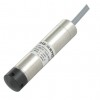 2 metre deep diesel tank level sensor for submersion - Submersible diesel level pressure sensor for installing in the bottom of tanks up to 2 metres deep.
2 metre deep diesel tank level sensor for submersion - Submersible diesel level pressure sensor for installing in the bottom of tanks up to 2 metres deep. Submersible oil pressure sensor alternative to Ashdown CNS - The CNS is obsolete and no longer manufactured. As an alternative for your fuel oil application we would suggest a 1.6 metre range LMP307
Submersible oil pressure sensor alternative to Ashdown CNS - The CNS is obsolete and no longer manufactured. As an alternative for your fuel oil application we would suggest a 1.6 metre range LMP307 Low cost 2 metre high diesel tank level sensor with 0-10 volt output - Cost effective level sensor 0 – 2m, media is diesel fuel, output is 0-10V
Low cost 2 metre high diesel tank level sensor with 0-10 volt output - Cost effective level sensor 0 – 2m, media is diesel fuel, output is 0-10V Diesel exhaust fluid tank level sensor for fleet storage - Measure the level of Adblue® diesel exhaust fluid as part of a tank monitoring system used to support depots operating a fleet of diesel trucks.
Diesel exhaust fluid tank level sensor for fleet storage - Measure the level of Adblue® diesel exhaust fluid as part of a tank monitoring system used to support depots operating a fleet of diesel trucks.
 Automatic fire pump engine 48 inch range 0-10Vdc output diesel tank level sensor
Automatic fire pump engine 48 inch range 0-10Vdc output diesel tank level sensor Overground horizontal cylindrical 10ft dia diesel fuel tank level sensor with 10-90% Vs output
Overground horizontal cylindrical 10ft dia diesel fuel tank level sensor with 10-90% Vs output 50cm range 0.5-4.5Vdc output submersible small diesel fuel tank level sensor
50cm range 0.5-4.5Vdc output submersible small diesel fuel tank level sensor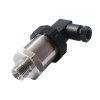 4000mm range 0-5Vdc output diesel tank level sensor for external fitting
4000mm range 0-5Vdc output diesel tank level sensor for external fitting 60 ftH20 gauge range 4-20mA output diesel tank level pressure sensor
60 ftH20 gauge range 4-20mA output diesel tank level pressure sensor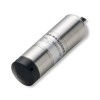 Genset hydrostatic sensor for measuring level of small diesel tank up to 12 inches
Genset hydrostatic sensor for measuring level of small diesel tank up to 12 inches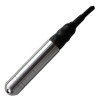 200 mbar diesel fuel oil tank level sensor for internal installation
200 mbar diesel fuel oil tank level sensor for internal installation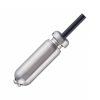 Diesel tank level transducer for mobile phone cellular transmitter/receiver mast sites
Diesel tank level transducer for mobile phone cellular transmitter/receiver mast sites
Product Types
 Submersible Diesel Tank Level Sensors - Diesel fuel oil storage tank device for measuring liquid level and converting it to an electrical signal to send to other instrumentation protected from diesel ingress when completely immersed in the fuel oil.
Submersible Diesel Tank Level Sensors - Diesel fuel oil storage tank device for measuring liquid level and converting it to an electrical signal to send to other instrumentation protected from diesel ingress when completely immersed in the fuel oil.
Diesel fuel is a ubiquitous fuel used to power engines in many places on land and sea.
Portable and mobile generators have diesel/generator oil powered engines to provide electrical power to equipment in remote locations, and emergency backup for buildings and factories during power network outages.
Trucks have diesel/DERV powered engines and smaller ones which are incorporated into auxiliary power units and temperature control units for refrigerated goods.
Tractors, crop sprayers, combine harvesters and other agriculture farm machinery run on diesel/red diesel/gas oil/off-road diesel oil powered engines.
Ships and other marine vessels use diesel/marine gas oil to power piston engines and gas turbines for propulsion, heating and electrical power.
Boilers use diesel/heating oil to heat water and provide a hot water supply and heating to buildings and factories.
Trains run on diesel powered piston or gas turbine engines.
Construction vehicles and machinery run on diesel/digger fuel powered piston engine.
There are different grades of diesel to suit varying performance requirements and environmental conditions. Due to the relatively high viscosity of diesel at room temperature, it will begin to wax at lower winter temperatures. Some grades are specially formulated to gel at lower temperatures, so they can be used in winter conditions.
Diesel is normally stored close to where the fuel is used in a appropriately sized tank, based on the practicalities and consumption needs of the diesel powered equipment.
Diesel tanks are installed above ground, underground, indoors and outdoors. A tank installed above ground level is often elevated so that the fuel can be fed by gravity without the need for feed pumps.
To prevent diesel from waxing at lower temperatures and in winter conditions, somes tanks are fitted with heaters to warm the fuel sufficiently to ensure adequate flow through feed lines.
There are various means to measure the contents of a diesel storage tank, and the majority measure the height of diesel in the tank. Level based monitoring can range from a simple site glass tube mounted on the side of the tank, to an electronic level gauge which sends readings via a wireless network. The main sensor technologies used to measure diesel contents are pressure sensors, capacitive probes, ultrasonic sensors and radar sensors.
The density of diesel will change with different grades, and environmental temperatures. This will have an effect on level monitoring technologies which may require adjustment or compensation, depending on whether it is weight or volume that is being measured, and whether the sensor technology is sensitive to density changes.
Any electrical based diesel level sensor that produces a measurement signal can be connected to telemetry instrumentation where it can then be sent wirelessly to where the data is needed for managing usage and supply. If the diesel tank is close by it may be more practical to send the signal via wires either using an analogue signal or digital interface.
A diesel level sensor is an instrument for measuring the height of a diesel fuel and converting it to an electrical signal which is sent to other instrumentation to display, monitor, log or control the diesel oil level.
There are many different types of technology use to measure diesel level, there are sensors that can be mounted above the diesel such as a ultrasonic or radar sensor. These sensors bounce a sound or electromagnetic wave off the surface of the fuel oil and use the travel time to determine the distance from the surface of the diesel.
For diesel filled tanks there are sensors which can be attached externally, such as floats running up and down a diesel filled tube connected at the bottom of the tank, or a pressure sensor installed in a hole in bottom of the tank which measures the pressure generated by gravity acting on the diesel.
Another method is to lower a probe into the tank and immerse it in the diesel. An example of this would be a capacitive probe which detects the changing capacitance charge as the length of the probe is exposed to varying proportions of diesel and air, or pressure sensors which measure the pressure generated by gravity acting on the surrounding diesel.
Product Help
Storage temperature effects on diesel fuel level
How does storage temperature affect diesel fuel level readings?
Remember when setting up and calibrating a tank level sensor that diesel fuel is affected by the ambient temperature of the storage tank. The level will decrease slightly at lower temperatures, and increase for higher temperatures due to thermal expansion and contraction.
The type of sensor technology, and in some cases where it is installed in the tank, may or may not show up temperature changes as a measured change. Also whether you are concerned with level, weight or volume change will factor into deciding if compensation is necessary.
e.g. a pressure sensor measures hydrostatic pressure of a column of diesel fuel. If the pressure sensor is mounted at the bottom of the tank, then the reading will be unaffected by a rise and fall in temperature, since 100% of the fuel is above the sensor, and the hydrostatic pressure is directly proportional to the weight of diesel fuel (which is static) rather than the volume (which changes with temperature). However, if the sensor is mounted, say at 25% of the height of the tank from the bottom, then the proportion of diesel fuel above the sensor will change with temperature, which will affect the pressure reading, even though no diesel fuel has been added or removed.
